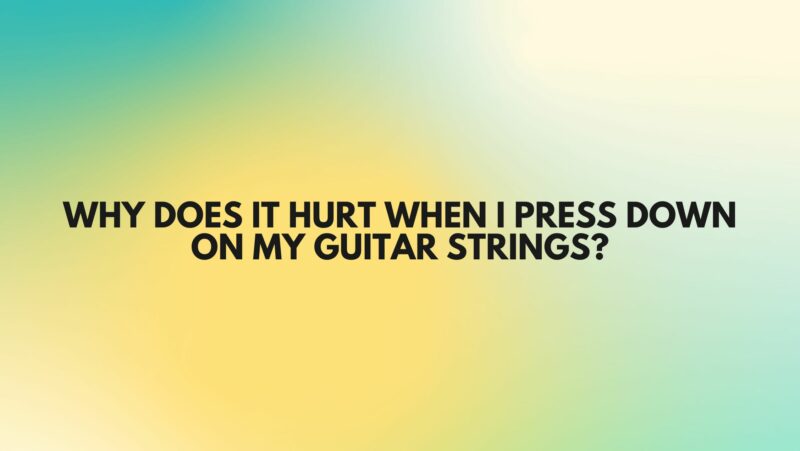Playing the guitar is a rewarding and enjoyable experience, but for beginners and those new to the instrument, pressing down on the guitar strings can sometimes be painful. The discomfort or pain you feel in your fingertips is a common challenge that many guitarists face, especially when starting their musical journey. In this comprehensive article, we will delve into the reasons behind why it hurts when you press down on your guitar strings and provide valuable tips to help alleviate and prevent this discomfort, allowing you to enjoy your playing more.
1. String Tension and Finger Pressure
The primary reason for discomfort or pain when pressing down on guitar strings is the tension of the strings. Guitar strings, especially steel strings on acoustic and electric guitars, are under considerable tension to produce the desired pitches. When you press the strings down on the frets to create notes or chords, you are effectively countering this tension with the strength of your fingertips. The more tension in the strings, the more pressure you need to exert to fret the notes.
2. Finger Calluses and Conditioning
One of the most effective ways to mitigate the pain of pressing down on guitar strings is to develop calluses on your fingertips. Calluses are areas of hardened skin that form as a natural response to repeated friction and pressure. Over time, playing the guitar will stimulate the formation of calluses on your fingertips, which act as a protective barrier between your skin and the guitar strings. As your calluses develop, you’ll experience less discomfort and pain.
3. Initial Discomfort
When you first start playing the guitar, your fingertips are not accustomed to the pressure and friction of the strings. This can result in soreness and discomfort, much like any new physical activity that involves repetitive movements. It’s important to remember that this initial discomfort is a normal part of the learning process and will subside as your fingers become conditioned.
4. Technique and Finger Placement
The way you press down on the strings can significantly impact the level of discomfort. Using the correct finger placement, with your fingertips pressing down on the strings, distributes the pressure more evenly and reduces pain. Avoid using the pads of your fingers, as they are softer and more sensitive.
5. String Gauge
The gauge of your guitar strings can also affect the level of discomfort. Lighter gauge strings have less tension and may be easier on your fingertips, particularly if you are a beginner. However, lighter strings can affect tone and volume, so it’s important to find a balance that suits your playing style.
6. Proper Guitar Setup
A well-set-up guitar can make a difference in playability. Consult a professional luthier or guitar technician to ensure your guitar’s action (string height) and neck relief are properly adjusted. Lowering the action can reduce the effort required to press down on the strings.
Tips to Alleviate Pain:
- Frequent Practice: Consistent practice will help build finger strength and develop calluses more quickly.
- Finger Exercises: Incorporate finger exercises into your practice routine to improve finger dexterity and strength.
- Proper Hand Position: Maintain proper hand position on the guitar neck, with your thumb behind the neck and fingertips pressing down on the strings.
- Shorter Practice Sessions: If you’re experiencing significant discomfort, consider shorter practice sessions to give your fingertips time to recover.
- Topical Treatments: Some guitarists use over-the-counter creams or ointments to help alleviate soreness. Consult a medical professional for guidance on their use.
Conclusion
While it’s common to experience discomfort or pain when pressing down on your guitar strings, it’s important to view it as a temporary hurdle on your musical journey. With consistent practice and proper technique, your fingertips will develop calluses, and the pain will gradually diminish. Remember that it’s all part of the process of becoming a skilled guitarist. Embrace the challenge, and soon you’ll be playing pain-free, enjoying the beautiful music you create on your guitar.


